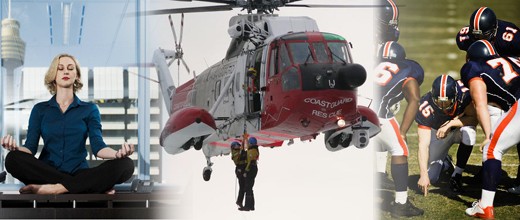Website sections:
Current section's content:
- You Can Manage and Program Creativity
- Creative Abilities and Creative Thinking Skills Management
- Briefly About CreativityModel Method Usage
- CreativityModel Method Usage Opportunities and End-User License Agreement
- Current Version of CreativityModel Method
- CreativityModel Method Abstract
- CreativityModel Method Version Changes
- CreativityModel Method Glossary
- Explanation of the Method's Component Parts and How the Component Parts Interact
- Explanation of How the Method's User Achieves Results
- CreativityModel Method - Generate Dots, Connect the Dots
- CreativityModel Method Usage Areas
- The Artist in You
- Growth of the Artist in You
- The Result Getter in You
- Applying the Result Getter in You
- About Choice Supported Creativity Usage
- The Problematic Side of Business Creativity
- Creativity Management and Business Creativity
- Sales CRM Software Development Example
- Why Does Creativity Management Matter and What Can You Do About This?
- Goal Oriented Creativity Management and CreativityModel Method
- Goal Oriented Creativity Management and Your Personal and Professional Life
- Teenager, Version 1 - Confusion
- Teenager, Version 2 - Career Development and Life Management
- Managers, Version 1 - Zigzagging Business Development
- Managers, Version 2 - Innovation Management and New Product and Service Development
- The President, Version 1 - Some of It Did Happen
- The President, Version 2 - Self-Expression, Conflict Resolution, Creativity and Leadership
- CreativityModel Method Development Background
- Further Development of CreativityModel Method




















Applying the Result Getter in You
CreativityModel Method addresses goal oriented business creativity and self-expressive artistic creativity usage in combinations. Both are needed in personal and professional everyday life.
This article is fourth in a four article series and accompanies the following articles: The Artist in You, Growth of the Artist in You, The Result Getter in You, Applying the Result Getter in You (the current article). This series describes CreativityModel Method usage areas.
When you use CreativityModel Method, you work within your abilities, experience and expertise. Even though you are bound by these limitations, CreativityModel Method usage can help to accomplish projects that you would not be able to accomplish otherwise. Projects that are bigger than your current abilities, your expertise and experience combined. This is so, because you start with where you want to be, chart the path there, and learn in the process. It's the beauty of directed efforts.
Project into the Future, Then Turn it into Reality
Goal oriented creativity usage is largely about deciding what you want to achieve and about plotting optimum paths that can take you there. Often this requires planning and research, but these efforts can improve the level of preparedness, and that can pay off big time during the implementation. Here are some relevant suggestions.
- During the preparatory planning stage, proceed from the goals to the starting point, focusing on putting together an optimum structure for the project. That structure should consist of parts (or steps or milestones), each of which has its own intended objectives. That structure should lead to achievement of the project's goals or objectives.
- Proceeding with planning from the goals or objectives to the starting point helps to think through, what is needed for achievement of the goals or objectives, and to reduce the probability that necessary steps are overlooked.
- More granular and detailed knowledge can help to decrease project implementation related risks.
- During the implementation stages, within the primarily goal oriented structure, in the areas where you don't need to set and achieve goals, use choice supported, self-expressive creativity principles for generating results.
- Especially during pooling (the alternative component or idea generating and gathering steps), try to avoid saying to yourself and to others, why something is not possible. Instead, focus on finding optimum objectives for the steps involved - what do you want to achieve, where do you want to be. Then search for ways to accomplish the objectives.
- Prefer not to settle for the first suggested or found alternatives that seem to be good enough. Instead, step-by-step, as much as time and other resources permit, do pooling for generating alternative versions of elements and consider them in different combinations, so that you can choose the best options.
- Communicate with the participants and clarify what needs to be achieved with each milestone. Leave sufficient room for implementation related flexibility. Doing so increases the probability that the planned structure can be implemented so that the project's objectives will be achieved.
- The planned structure should be put together so, that the structure helps to complete the project in accordance with its theme and goals. The purpose of the planned structure is to work like a navigation aid. So, for most types of projects, the planned structure aids the implementation process, but does not have to be implemented precisely in the initially planned way. The intended goals or objectives should be achieved. Some milestone's goals may be changed as well, especially if better alternatives emerge for reaching the next milestone's goals.
These CreativityModel Method's principles can be helpful in life management and career development.
Similarly, these CreativityModel Method's principles help to increase the quality of the outcome when used for business planning, business development, strategic planning, organizational development, innovation management, and new product and service development.
As always, project specific rules and requirements apply. CreativityModel Method addresses creativity management. Other branches of knowledge and their requirements apply as well - for example, business management principles are relevant to most of the areas listed above, marketing principles apply in marketing related areas, and so on.
However, you can and should use choice supported creativity within the goal oriented creativity framework. Among other things this means that you can use choice supported creativity when you need to achieve specific goals. So, when applicable, you can consider working with the project specific rules similarly to working with other project elements.

